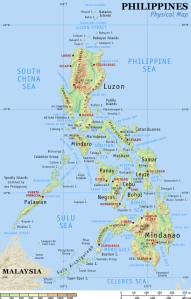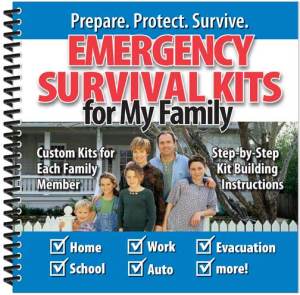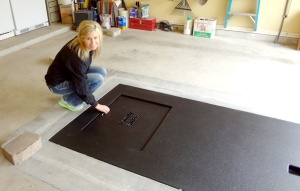This past weekend, Typhoon Haiyan struck the Philippines, leaving miles of devastation and thousands of deaths. This disastrous storm once again should serve as a reminder to everyone, climate change believers and deniers, that these events still occur and that preparedness for severe weather disasters is a must.
We acknowledge that the geography of the Philippines alone (an archipelago comprised of 7,107 islands) made it especially vulnerable to the 25 feet storm surge with sustained winds greater than 100 miles per hour that battered the island nation, leveling everything in its path. While some areas, such as Manila, fared relatively well, many coastal villages were totally destroyed. Additionally, the economy of this emerging nation, plagued by a poverty rate of 27.9%, was a significant factor in the lack of storm preparedness, largely due to the inability to effectively address issues, such as infrastructure and construction of residences and other buildings to codes that withstand severe weather events.
With that said, it is more important than ever for everyone, regardless of economic station or geographical location, to have a plan in place in order to survive severe weather disasters. Any such plan must include the following basic elements:
- Water: The general rule is to have one gallon of water for at least three days for drinking and sanitation.
- Food: A minimum of a three-day supply of non-perishable food should be available.
- Radio: This should be battery-powered with a tone alert and with extra batteries.
- Flashlight: Every essential survival kit should have a flashlight with extra batteries to be used during power outages.
- Cell phone: Make sure a solar charger is included.
Additional emergency supplies that should be added to the essential preparation kit are prescription medications, diapers and infant formula if needed, food and water for pets, sleeping bags and blankets, a change of clothing and paper and plastic eating utensils. We also suggest that a disaster kit include cash or traveler’s checks in case the family has to relocate to a hotel or travel to stay with friends or family. Also, make sure you fill the car with gas in cases of news of impending storms. With the possibility of total residence destruction, it is recommended that copies of all important papers (legal records and certificates, insurance information and pictures and documentation of household valuables) be stored in a secure remote location, i.e., safe deposit box.
Another consideration in emergency preparedness is the purchase and installation of a storm shelter, if possible. Of course, these fixtures once were staples in the plain states which were consistently subjected to tornadoes. Now that tornado alley has expanded to include most regions of the United States, such structures are making a necessary comeback.
For those of us who belong to homeowners associations where we pay dues for services, now is the time to enlist these organizations to address the issue of storm preparedness and the institution of guidelines to assist and protect the members of the communities they serve. Issues to be addressed include, but are not limited, to the following:
- Facility Preparation: Addressing the need to determine if property is ready to confront the impact of a severe storm with documentation of property pre-storm state, which is crucial to disaster recovery.
- Member communication: Procedures in place for board members to communicate with residents and employees prior to a storm’s arrival, during a storm and in the post-storm period.
- Post-storm action: Immediate attempts following a weather disaster to locate residents and employees to ascertain their condition, to attend to injured residents and employees and to secure the community and document storm damage.
- Reconstruction and Restoration: Dealing with insurance companies and attorneys to restore the community.
The most important consideration of storm preparedness should be the human factors. Every step should be taken to avoid and/or to reduce the loss of life during tornadoes, hurricanes, typhoons and any other severe weather event. To that end, we all should maintain open communication with our neighbors and support each other during storms.
As we all mourn the tragic losses in the Philippines from Typhoon Haiyan, we need to be mindful of the part each of us plays in climate change and the weather calamities that keep striking all over the world. We must increase our efforts at environmental protection and sustainability while simultaneously planning for disaster survival. To strive for the safety and survival of all people globally is to live green, be green.
_____________________
Sources for this article:
1. http://www.usatoday.com/story/money/business/2013/11/11/philippines-economy-typhoon/3494517/
2. http://en.wikipedia.org/wiki/Geography_of_the_Philippines
3. http://www.kgblawfirm.com/press-releases/katzman-garfinkel-berger-community-advocacy-network-make-available-community-association-hurricane-preparedness-guide/
4. http://www.ready.gov/basic-disaster-supplies-kit
Related articles
- Typhoon and hurricane storm surge disasters are unacceptable (washingtonpost.com)
- Typhoon Haiyan: a perfect storm of corruption and neglect (theecologist.org)
http://youtu.be/SSeYmRghibs




